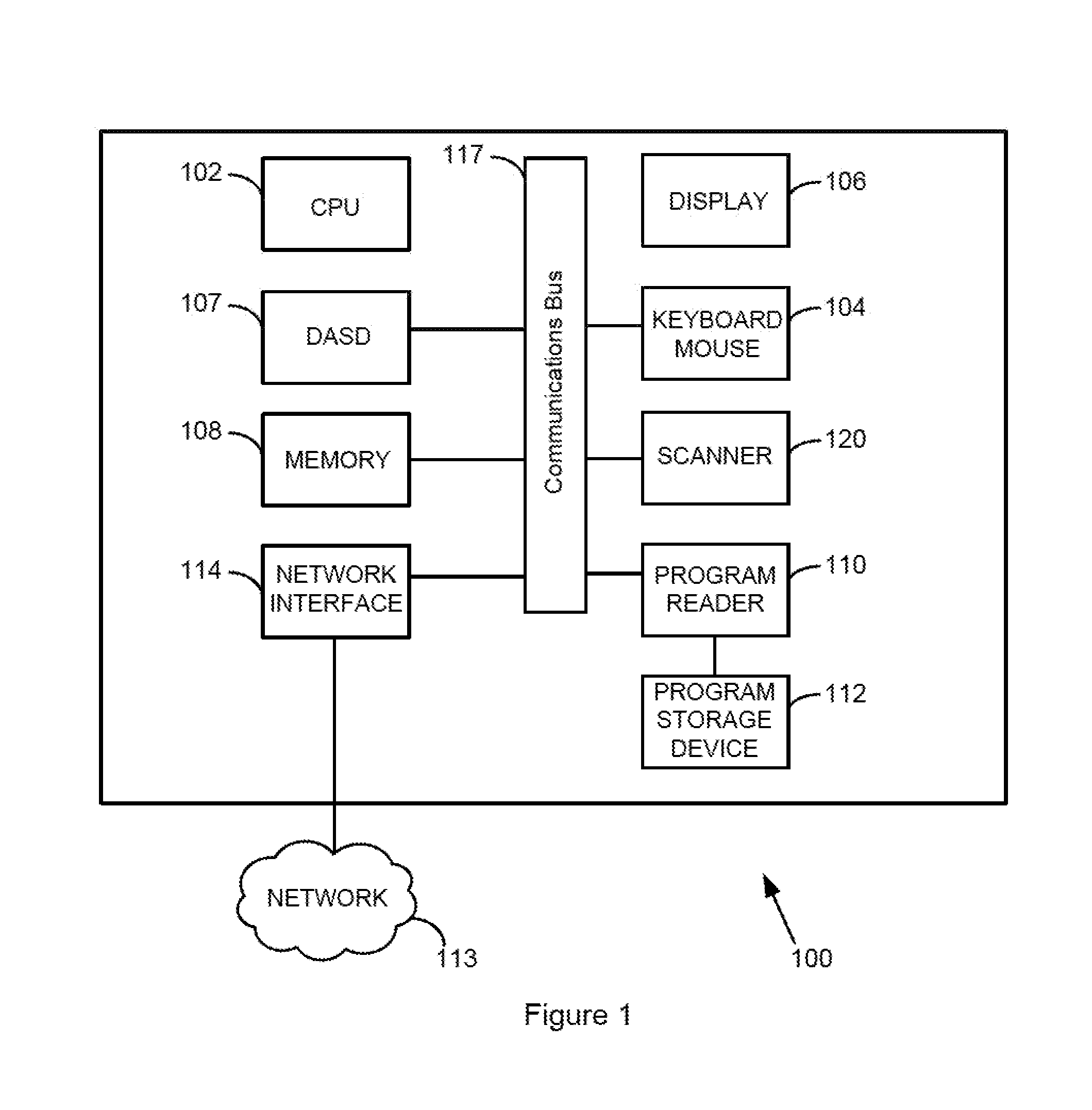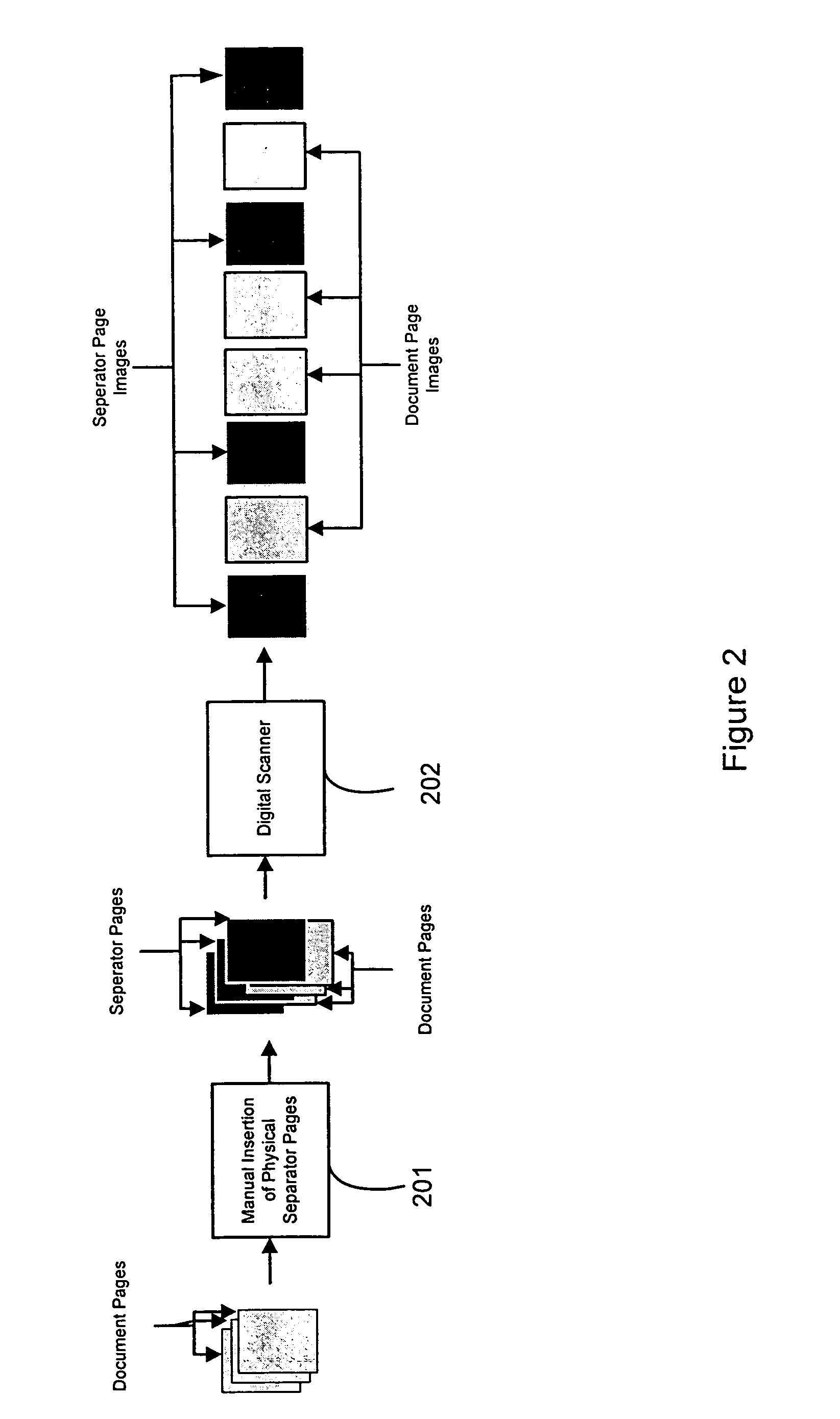Automatic document separation
a document separation and automatic technology, applied in the direction of digitally marking record carriers, digital output to print units, instruments, etc., can solve the problems of inconvenient maintenance, high labor intensity, and inability to meet the needs of users, and achieve the effect of convenient maintenance and reconfigurability of the network structur
- Summary
- Abstract
- Description
- Claims
- Application Information
AI Technical Summary
Benefits of technology
Problems solved by technology
Method used
Image
Examples
Embodiment Construction
[0030]The invention is described in detail below with reference to the figures, wherein like elements are referenced with like numerals throughout.
[0031]The present invention may be implemented using software on a computer system or other processing system. FIG. 1 is a block diagram of an exemplary computer system 100 capable of carrying out the functionality of the invention described herein. Each computer system 100 operates under control of one or more central processor units (CPUs) 102, such as a “Pentium®” microprocessor and associated integrated circuit chips, available from Intel Corporation of Santa Clara, Calif., USA. The computer system 100 can input commands and data from a keyboard and mouse 104 and a user can view inputs and computer outputs at a display 106. The display is typically a video monitor or flat panel display device. The computer 100 also includes a direct access storage device (DASD) 107, such as a fixed hard disk drive. A memory 108 typically comprises vol...
PUM
 Login to View More
Login to View More Abstract
Description
Claims
Application Information
 Login to View More
Login to View More - R&D
- Intellectual Property
- Life Sciences
- Materials
- Tech Scout
- Unparalleled Data Quality
- Higher Quality Content
- 60% Fewer Hallucinations
Browse by: Latest US Patents, China's latest patents, Technical Efficacy Thesaurus, Application Domain, Technology Topic, Popular Technical Reports.
© 2025 PatSnap. All rights reserved.Legal|Privacy policy|Modern Slavery Act Transparency Statement|Sitemap|About US| Contact US: help@patsnap.com



